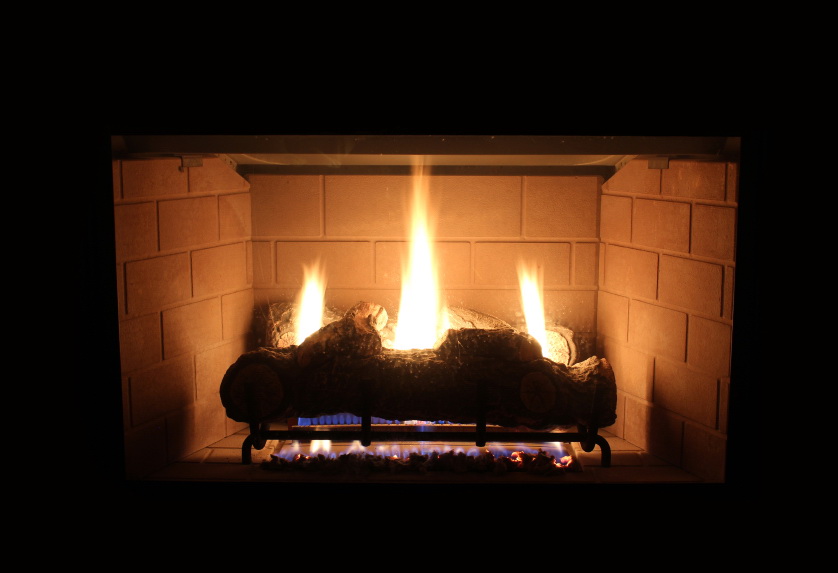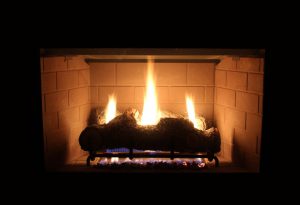
Vent-free fireplaces expedite installation as they don’t require outside exhausts. While some homeowners and builders promote the use of vent-free fireplaces because of reduced installation and running costs, others see them as a liability. One of the major contributing factors to the failure of vent-free fireplace units is improper use, but critics claim that lack of ventilation makes these installations a health and safety risk. We take a look at both sides of the argument.
installation and running costs, others see them as a liability. One of the major contributing factors to the failure of vent-free fireplace units is improper use, but critics claim that lack of ventilation makes these installations a health and safety risk. We take a look at both sides of the argument.
Advantages of vent-free fireplaces
Proponents of vent-free fireplaces claim that if they are used according to the instructions, for less than four hours a day and in a well-ventilated area, they pose no health hazard to home occupants. The installations are cheaper than vented fireplaces and provide an inexpensive addition to heating options. From VentFree.org: “Once appliances are in the U.S. marketplace, the U.S. Consumer Product Safety Commission (CPSC) is the primary safety ‘watchdog’, accumulating product safety data from numerous sources, and investigating and reporting the safety record of various product categories… The U.S. Consumer Product Safety Commission (CPSC) has stated that it is not aware of any documented incident in the CPSC In-Depth Investigation (IDI) database of fatal CO poisoning associated with an ODS-equipped vent-free gas heating product. These appliances have earned an outstanding safety record.”
Disadvantages of vent-free fireplaces
Other builders are less enthusiastic and claim that venting the by-products of combustion into your home is never a good idea. Perry Bumpers from Fireplace Creations in Tennessee refuses to install vent-free fireplaces: “After doing research, we decided we would never put a vent-free (room vented) appliance into our home. Because of this decision, we didn’t believe it would be right to sell them to our customers… In the last several years we have removed well over 400 vent-free appliances and replaced them with our direct-vented products,” says Bumpers.
One of the overwhelming concerns is that by-products of the combustion process collect in the home which may be related to health issues. Water vapor is a by-product of vent-free fireplace use (a 40,000 BTU appliance can produce over 6 gallons of water a day) and this may cause a myriad of moisture-related issues.
“The reason for removal of the vent-free products ranged from water running down the windows and walls, discolored walls, soot, mold and mildew issues, bad smell, not a realistic look, getting headaches, staying sick while using it etc.,” says Bumpers.
Vent-free fireplaces create a number of hazardous gases during combustion including carbon monoxide, carbon dioxide, nitrogen dioxide, and formaldehyde which can contribute to respiratory ailments and cause eye irritations and headaches.
Home Advisor suggests the following: “Improper installation, improper fireplace sizing, improper use, and appliance failure can all lead to major safety issues. In fact, health concerns over the use of this appliance have led some countries and states within the U.S. to ban vent-free gas fireplaces… Your best bet remains to simply put up the extra money and install a vented fireplace. It may cost a little more and not be as energy-efficient, but saving a few dollars on your utility bill shouldn’t be as important as the health and safety of your household.”
From VentYes: “Many of the largest national homebuilders have ceased using unvented gas hearth products because they don’t want the liability that is inherent in this product category… The American Lung Association’s Health House program has excluded them from building guidelines mainly because of water vapor production and nitrogen dioxide… A review of the Vent Free Alliance State by State Code Status shows that jurisdictions in 28 states restrict or prohibit the use of vent-free appliances with one state [California] prohibiting their use statewide.”
Natural Resources Canada: “Avoid vent-free gas fireplaces (gas logs). As the name implies, these units offer no venting capacity. This means that harmful combustion byproducts, including possibly deadly carbon monoxide, are released directly into your home. In airtight Canadian housing, these units are not only unacceptable, they can be dangerous. They may introduce unwanted moisture into the home as well.”
Many issues can be mitigated when users follow the guidelines and use the fireplace for less than four hours a day. Rooms that have vent-free fireplaces should be adequately ventilated, the fireplace should not be utilized as an alternate source of heat and it should be properly operated and regularly cleaned. It is advisable to ensure that there are carbon monoxide detectors in the room with the vent-free fireplace. If you currently advocate the use of vent-free fireplaces, ensure that you have done the necessary research and always adhere to the manufacturer’s installation instructions. We are not promoting either side of this discussion but simply want to inform people that there are potential issues and that they should investigate current information before making a decision.
